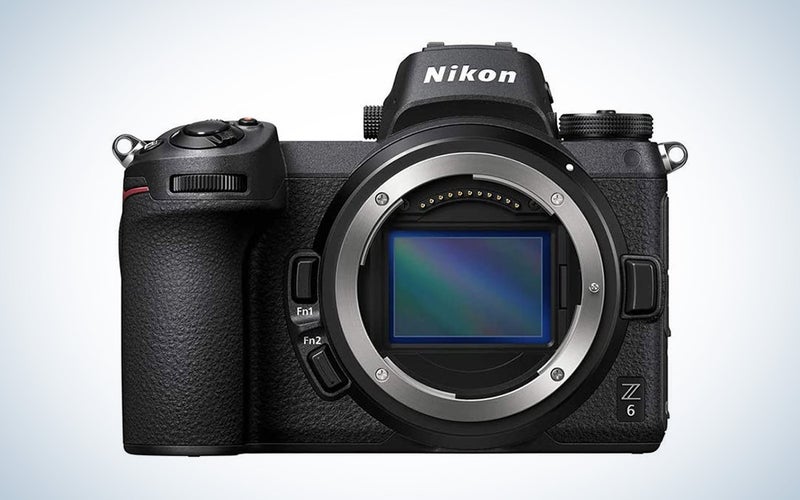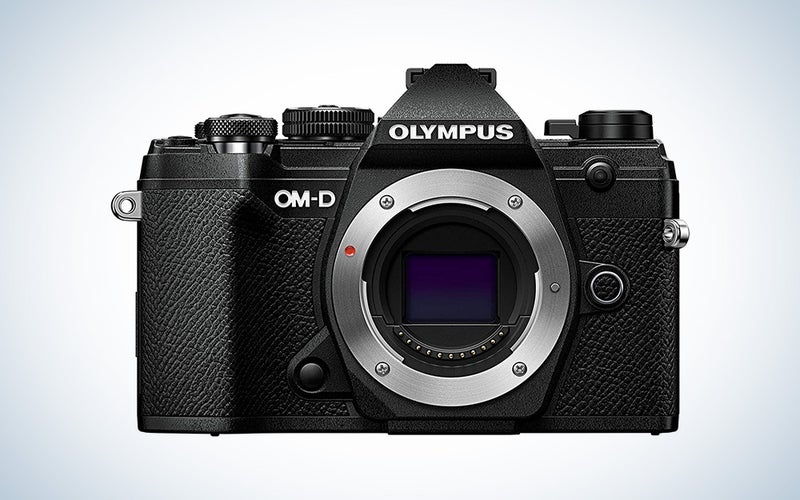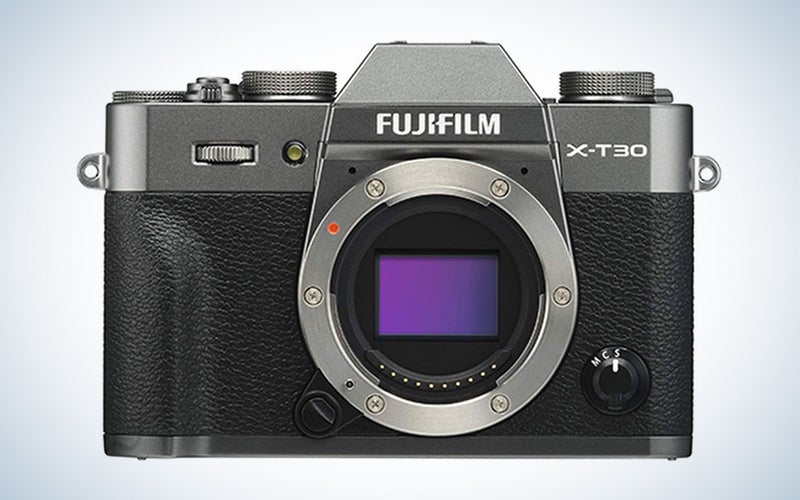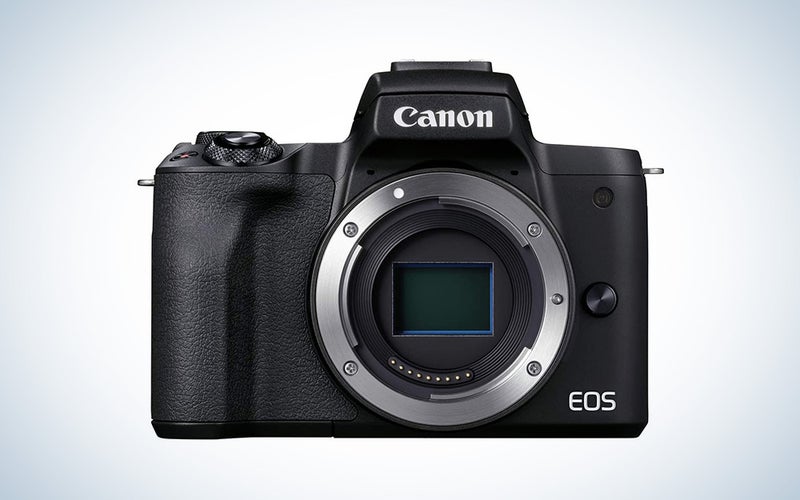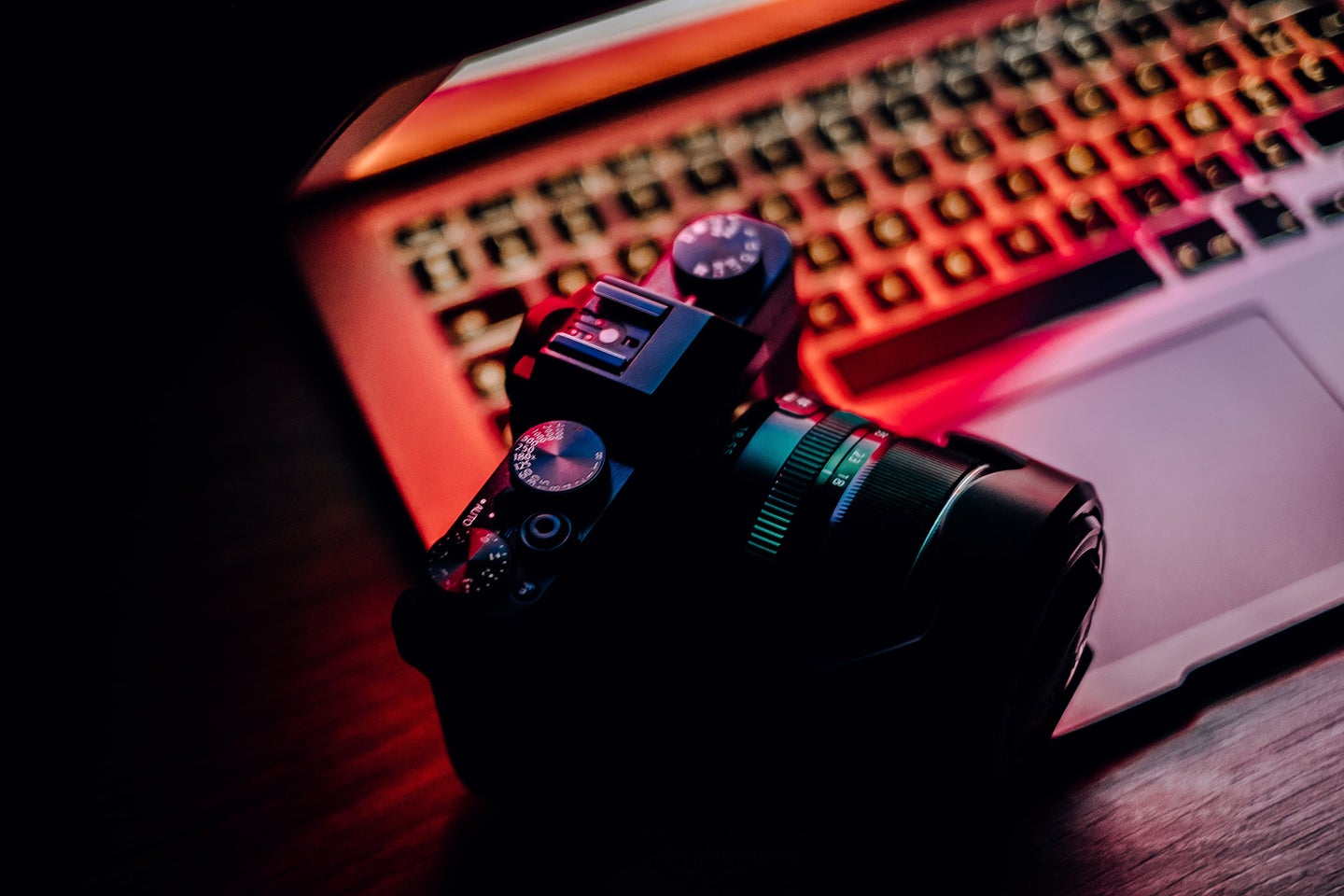
Mirrorless cameras abound in a market once dominated by DSLRs. And while Canon and Nikon make up the lion’s share of DSLR models, more than a half-dozen companies—including Canon, Fuji, Nikon, Olympus, Panasonic, Sigma, and Sony—are provide photographers with a wider range of options than the current crop of DSLRs.
Sensor size plays a key role when selecting a mirrorless camera. Like DSLR cameras, mirrorless models are available with full-frame (in which the sensor is the size of a picture taken on 35mm film) and APS-C sensors, which are roughly a third smaller. But there’s a third option as well: Micro Four Third sensors, which are half the size of full-frame and show up in Olympus and some Panasonic cameras. Whether or how this affects your choice is up to you, of course. Sensor size may be outweighed by other parameters such as low light performance, in-body image stabilization, or whether a particular mirrorless camera is a good choice for vlogging.
- Best mirrorless camera with in-body image stabilization (IBIS): Canon EOS R5 and Canon EOS R6
- Best full-frame mirrorless camera for low light photography: Nikon Z6 II
- Best mirrorless camera for video: Sony A7C
- Another great mirrorless camera for vlogging: Olympus O-MD E-M5 III
- Best mid-level APS-C mirrorless camera: Fujifilm X-T30
- Best budget mirrorless camera: Canon EOS M50 II
Features to consider when shopping for the best mirrorless camera
Choosing the best mirrorless camera for you depends on your needs. Are you looking for a mirrorless camera for beginners or something more specialized? Buying something below your level may hinder your growth as a photographer. However, buying a pricy pro body may clutter up your shooting experience with features you’ll never even use. We’ll take a look at some of the parameters that will help you make the best choice.
How important is image stabilization?
Image stabilization, which is available in some cameras and lenses, goes by different acronyms and names—VR (vibration reduction), OIS (optical image stabilization), and SteadyShot, to name a few. Image stabilization senses the movement of the camera while you’re taking the picture and makes adjustments—either in the camera or in the lens—in order to counteract that shake and prevent blurry photos.
Many mirrorless cameras offer IBIS (in-body image stabilization), a popular feature among photographers. One of the great things about IBIS is that, by default, every lens you use is image stabilized, which is like an instant upgrade to your current non-IS lenses. As a bonus, IBIS and IS lenses can often work together to deliver even greater levels of stabilization.
Image stabilization is measured in steps or exposure stops. Put simply, each step/stop of IS decreases the shutter speed needed to maintain a blur-free image. Obviously, the more steps/stops the better when you’re shopping for a mirrorless camera with IBIS.
Best mirrorless camera with in-body image stabilization (IBIS): Canon EOS R 5
Amazon
Although it’s a little pricey, the full-frame Canon EOS R5 delivers excellent stabilization—up to 8 stops in combination with Canon IS lenses. Other impressive parameters include speedy (and accurate) autofocus and tracking thanks to its Dual Pixel CMOS AF II system. It’s dust and water-resistant to withstand the rigors of outdoor photography and comes equipped with dual memory card slots, including a CFexpress.
If you don’t need the 45-megapixel resolution and super-high-res video chops found in the R5, the Canon EOS R6 offers many of the same in terms of focusing and stabilization with a more reasonable 20-megapixel resolution and matching SD card memory slots.
Do you get the best low-light photography? Go for a full-frame mirrorless camera.
Photographers often encounter low light situations where the choices are either boost the ISO and risk image noise, miss the shot or use a flash. The latter isn’t always the best option especially if you want to capture the ambience of the scene and/or flash is prohibited. Keep in mind that most mirrorless cameras do not have built-in flash anyhow; rather, they have a hotshoe to attach an external flash.
Flash aside, there are three basic elements of low-light photography to consider. First, full-frame cameras are typically better at low light photography since their larger sensor size gathers more light. You also need to consider how well the camera keeps image noise at bay while maintaining good detail and sharpness and whether the camera’s autofocus can function well in low light. The latter is measured as minus “x” EV.
If you frequently shoot indoors—whether at parties or indoor sporting events—low light performance will be key to getting the shots you want. And even if you shoot outdoors, higher ISO settings can come in handy for capturing fast action like sports, which requires extremely short shutter speeds to freeze motion.
Best full-frame mirrorless camera for low light photography: Nikon Z6 II
Amazon
The well-rounded, full-frame Nikon Z6 II mirrorless camera is equipped with great still and video features. Its low light capabilities range from minimal image noise at high ISOs and, critically, excellent low light AF—down to -4.5EV, one-stop lower than its Z6 predecessor. That means it can focus in the moonlight—even when it’s less than a full moon. As a bonus, the Nikon Z6 II is equipped with a special low light autofocus mode that takes its capabilities an additional two stops, providing a good balance between minimal levels of image noise and effective autofocus in very low light.
The Sony A7S is another solid option, especially if you shoot a lot of video or you don’t need a ton of megapixels. The 12-megapixel resolution seems paltry to many still photographers, but that low resolution comes with extremely clean high-ISO images.
A 4k mirrorless camera is great for vlogging
While you can vlog with pretty much any mirrorless camera, there are features that not only make vlogging easier but combine to deliver the best footage possible. Two key features in a mirrorless camera for video are an articulated LCD and a microphone jack. The former lets you flip the LCD out and away from the camera to view yourself as you’re filming. At the same time, an external microphone can be mounted on the camera’s hotshoe without blocking the LCD. In-body image stabilization is ideal since it steadies the shot regardless of what lens you use and can help steady video when handholding the camera.
In the end, vlogging doesn’t always require 4K resolution but it’s always better to have the option if and when you need it.
Best mirrorless camera for video: Sony A7C
Amazon
Size and weight matter when you’re holding a camera pointed at yourself all day long, and Sony’s A7C is one of the most compact full-frame mirrorless cameras on the market. It has everything a vlogger needs, including 4K capture, a screen that flips forward so you can monitor your shot in real-time, and a microphone jack for accessories. The small, rectangular form factor makes it easy to attach gimbals and other filmmaking equipment that comes in handy when you’re trying to maximize your production value and have viewers slamming those like and subscribe buttons on Youtube.
Another great mirrorless camera for vlogging: Olympus O-MD E-M5 III
Amazon
If you’re looking for something better suited to a hybrid photography and blogging roll, the Olympus O-MD E-M5 III makes it easy to produce great blogs thanks to its fully-articulated LCD and external microphone jack. Shoot in 4K or UHD video with a steady hand thanks to its excellent built-in image stabilization. Unfortunately, there’s no headphone jack but that’s about the only compromise vloggers will have to make with this Four Thirds mirrorless camera.
Versatility is key in a mirrorless camera
If you’re looking for an all-around solid mirrorless camera rather than a model that excels at one or two of your main needs, it’s important to balance its feature set and performance. On the feature side, look for a good mix of still and video capture as well as basic and advanced controls. The latter is especially important if you want to grow your picture-taking skills. Also, check to see what creative options are available to indulge your artistic side.
Performance is always key, particularly when it comes to autofocus. AF performance can be measured, in part, by how many AF points are available and, more importantly, hands-on tests. It’s also good to look for special features like face detection. Most mirrorless cameras deliver anywhere from good to excellent continuous shooting rates but unless you’re shooting fast-moving sports, average FPS rates should be more than sufficient.
Best all-around APS-C Mirrorless Camera: Fujifilm X-T30
Amazon
With enough features and speed to capture most types of situations, the Fuji X-T30 is a good option for most photographers who want a compact and speedy mirrorless camera. Fast and accurate autofocus is complemented by excellent face detection to ensure your human subjects are always sharply focused. Add up to 8 frames per second continuous shooting (30fps in sports mode), 4K video and a series of unique film simulation to this compact, portable camera, and the Fuji X-T30 is a camera you’ll carry with you when you’re out and about. The X-T30 lacks image stabilization but if you have the extra dough, check out the higher-end X-T3 or X-T4 models.
Best budget mirrorless camera: What you get for under $700—including a lens!
There are few truly affordable mirrorless cameras with the absolutely newest technology and sophisticated feature sets. Let’s face it, if you want the latest and greatest, you’ll likely have to pay a premium. But if you’re eyeballing a camera that exceeds your budget, check out the previous model, which will likely have many of the same features as the newer camera but at a lower price. So if you crave a certain camera, keep an eye out for price drops when a new version is released.
Best budget mirrorless camera: Canon EOS M50 II
Amazon
When spending your hard-earned dollars, you’re looking for good value and the Canon EOS M50 II delivers. Content creators will appreciate the Instagram-friendly vertical video and the free software that turns the Canon EOS M50 II into a webcam. A touchscreen vari-angle will appeal to vloggers and you’ll find a good mix of still and video features, too, including 4K video capture.
FAQs
Q: Why mirrorless cameras better than DSLRs?
There are a few ways in which mirrorless cameras outperform DSLRs. In general, mirrorless cameras and their lenses are generally smaller and lighter if only because they don’t need a mirror inside to flip up and down. Mirrorless cameras have electronic viewfinders that show the same information and image as the LCD so, conveniently, there’s rarely a need to move your eye from the EVF to the LCD—including when reviewing images.
DSLRs also use dedicated autofocus sensors that exist outside of the imaging sensor. If the two sensors get out of alignment, the camera needs adjustment or the photos will turn out blurry. Also in terms of autofocus, mirrorless cameras offer extremely accurate face and object tracking that DSLRs typically can’t match.
Q: What’s the best mirrorless camera for 2021?
It’s still early in the year but it seems that the Canon EOS R5 with its high resolution, 45 megapixel, full-frame sensor is in the lead for excellent still image quality. Even with those large files, the speedy Canon EOS R5 can capture up to 20 frames per second in continuous shooting mode.
Q: How do the different size sensors affect picture-taking on mirrorless cameras?
One of the main differences is how sensor size impacts effective focal lengths on lenses. A full-frame sensor delivers the same angle of view as it would on a 35mm film camera. An APS-C sensor “crops” the image by 1.5x or 1.6x (Canon). Attaching a 100mm lens, for instance, will act more like a 150mm lens. Micro Four Thirds sensors double the effective focal length so a 100mm lens delivers a 200mm equivalent focal length. That can be both a positive and negative depending on your needs. If you want longer reach, the smaller APS-C sensors can offer it. If you want wider lenses, it’s easier to achieve on a full-frame body.
A final word on shopping for a mirrorless camera
Shopping for the best mirrorless camera is really a personal issue. It’s important to think about what kind of images you want to capture and then find the features that make it possible—whether it’s low light, video for vlogging, or action shots. Don’t be fooled into thinking you need the latest and greatest to make the best decision. There are plenty of solid options in various price points, including budget models.
The post Best mirrorless cameras of 2022 appeared first on Popular Photography.

